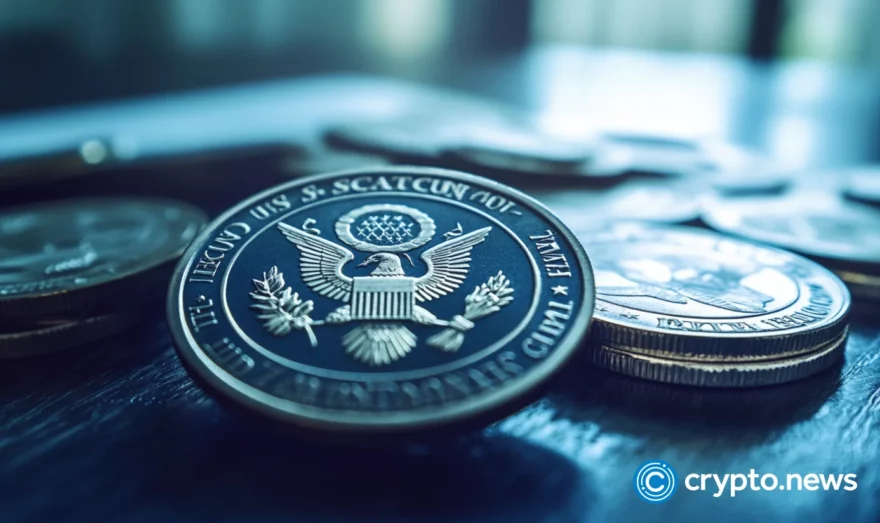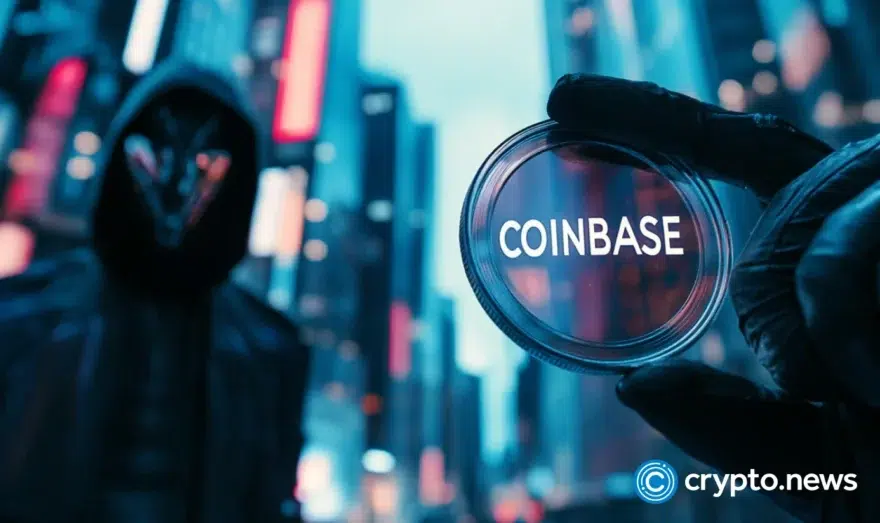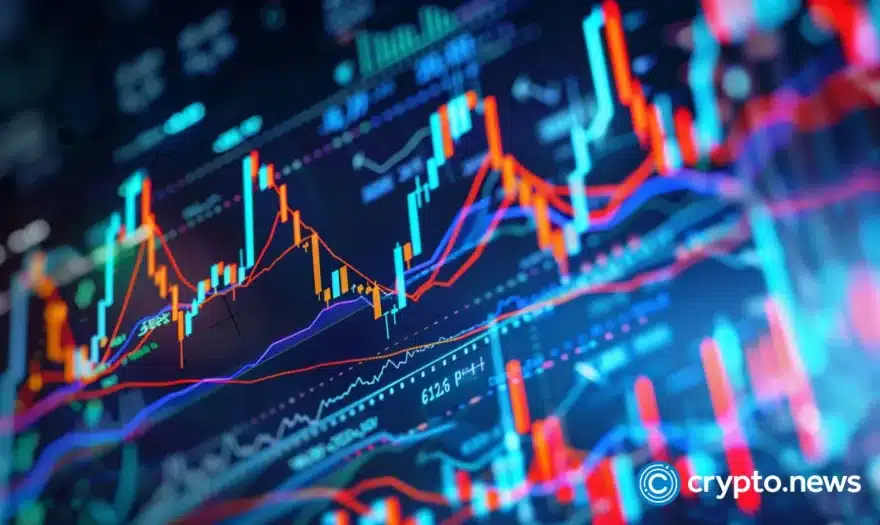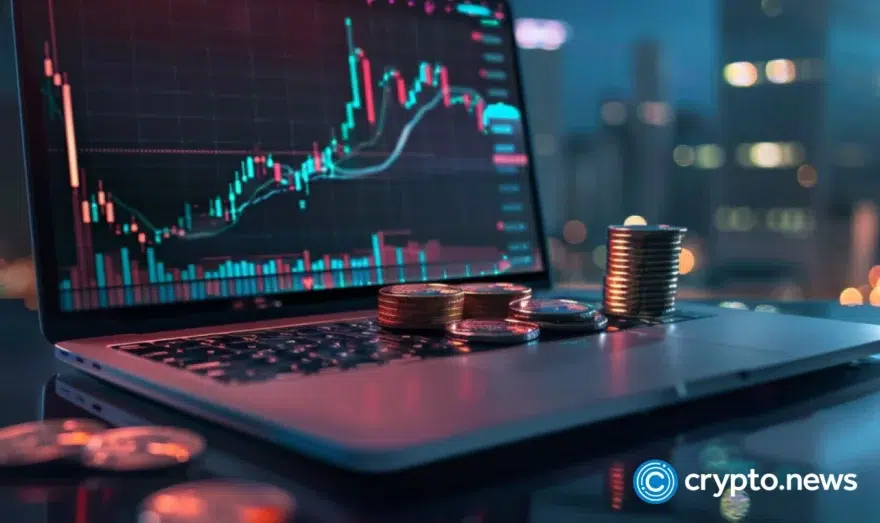Interview | Charlie Lee on Lite Strategy’s $100m LTC treasury bet

MEI Pharma (now rebranded as Lite Strategy) has become the first U.S.-listed company to adopt Litecoin as a primary reserve asset, committing $100 million to the cryptocurrency as part of its new treasury strategy.
- Lite Strategy (ex-MEI Pharma) became the first U.S.-listed firm to adopt Litecoin as a primary reserve, committing $100 million.
- Charlie Lee (Litecoin creator, board member) helped structure the plan with Titan Partners and GSR.
- In a Q&A with crypto.news, Lee discusses LTC’s uptime, low fees, fixed supply, how Lite Strategy aims to be an institutional gateway ahead of potential LTC ETFs.
Charlie Lee, the creator of Litecoin (LTC) and Lite Strategy board member, has been closely involved in shaping the plan, working alongside key partners to execute one of the largest LTC acquisitions to date.
In this interview, Lee explains why Lite Strategy selected Litecoin over larger-cap cryptocurrencies and stablecoins, how the treasury initiative was structured, and what the move could signal for institutional adoption of LTC. He also addresses questions around governance, market risk, and the long-term vision for integrating Litecoin into corporate reserves.
The conversation also touches on Litecoin’s unique attributes, such as its many years of uninterrupted uptime, low transaction fees, and widespread retail integration. Lee outlines how the many positive attributes, combined with Litecoin’s fixed supply and track record, position the company’s strategy as both a practical step and a forward-looking bet on digital assets.
The entire interview with Litecoin creator and Lite Strategy board member Charlie Lee is below.
crypto.news: The first question to ask is perhaps the most obvious one: Why did MEI choose Litecoin as its primary reserve asset? What unique advantages or convictions about LTC made it more compelling than larger-cap coins or stablecoins?
Charlie Lee: Obviously, as the creator of Litecoin I’m biased here but there are multiple reasons for the conviction I’ve maintained in LTC and the Litecoin ecosystem since the very beginning.
Litecoin takes the advantages of Bitcoin and makes it usable. It’s faster and it’s cheaper to transact, making it the ideal asset for payments and transfers. That’s a massive use case right from the start.
LTC is a proven form of “hard money” with a track record of adoption going back 14 years: That’s 4 years before Ethereum. LTC is proven as a store of value and has a defined, limited supply, which makes it attractive as a long-term reserve asset, compared to fiat-denominated crypto stablecoins, which by and large are basically wrappers for U.S. dollars and carry inherent technological and political security risks.
Yet, from an institutional perspective, LTC is still early. Unlike BTC and ETH, no ETFs have been approved for LTC.
While LTC is among the largest crypto assets by market cap, it’s market cap is less than 1/250th of BTC’s and 1/60th of ETH’s. So we see potential upside here.
If you are looking for a tried-and-true digital asset with solid use cases, ongoing development and major upside, then we believe LTC is an attractive option for treasuries alongside BTC, ETH and other assets.
CN: As Litecoin’s founder and now an MEI Pharma board member, how did you get involved in this treasury initiative? Did MEI approach you, or have you been advocating for Litecoin’s inclusion? Can you walk us through how this $100 million treasury plan came together and your role in making it happen?
CL: After watching the market develop for Bitcoin and Ethereum treasuries, it felt inevitable that Litecoin would also find its place, given its strong historical track record and uptime, CFTC classification as a commodity, unique properties, and the absence of a VC or founder overhang. We believed it was the perfect asset for a digital asset treasury.
As the sole placement agent in connection with the private investment in public equity (PIPE), Titan Partners deserves credit for taking the leading role in putting together the deal that enabled MEI to pursue the LTC strategy.
A number of vehicles were explored for the initiative, but ultimately MEI stood out.
Unlike many others, MEI’s management and board had done an excellent job managing the company—they had preserved a significant cash balance, carried no debt, and had minimal dilutive securities outstanding. That made MEI the clear first choice.
As for how the transaction came together, we worked hand-in-hand with GSR to structure it thoughtfully. We took lessons from the successes and failures of other vehicles and built a robust capital markets plan before launching. The level of interest and eventual demand in the PIPE offering that launched the new strategy was extremely exciting to see.
CN: MEI is the first U.S.-listed public company to adopt Litecoin as a primary reserve asset. How meaningful is this for Litecoin’s mainstream credibility and institutional adoption? Do you expect other companies to follow now that MEI has set a precedent?
CL: The retail adoption for Litecoin is already there. Litecoin is one of the most popular cryptocurrencies for payments in terms of transaction volume, alongside Bitcoin, USDC, and USDT.
Out of the coins on that list, only Bitcoin and Litecoin can be considered decentralized, hard money. Litecoin improves upon Bitcoin by being optimized for payments and transfers. I like to call Litecoin “the People’s money.”
But you can also make a case for Litecoin (since it is hard money) being the Digital Silver to Bitcoin’s Digital Gold, from an institutional perspective.
That’s the opportunity we see with MEIP, and of course we have like-minded competitors. We certainly anticipate other companies may follow our lead and incorporate Litecoin into their reserves – either as a single-asset strategy or as part of a basket of digital assets.
What we’re really looking forward to in the short term, however, is the widely expected approval of Litecoin ETFs in the U.S. We think this will really open up the playing field.
MEIP is the easiest and safest way for all investors – big and small – to gain exposure to LTC in a compliant way, in advance of the LTC ETF approvals.
CN: The announcement notes Litecoin’s 13 years of uptime, low fees, and integration with platforms like Robinhood, PayPal, BitPay, and Venmo. Why are these specific attributes mentioned by a pharmaceutical company instead of focusing on other qualities such as the fixed 84 million supply and halving cycle, which speak more directly to its value as a scarce monetary asset?
CL: That’s a great question. At the retail level, people are more concerned with the ability to use LTC for secure, fast and inexpensive payments.
We are building MEIP as the institutional gateway to Litecoin. As you reference above, the “other side” of LTC becomes more important to large, long-term investors – that is, LTC has an encoded hard cap and halving schedule for mining rewards. For nearly 14 years, Litecoin has maintained not only its operations – but its perception as a store of value. In other words, it’s hard money.
We are incredibly bullish both as Litecoin as a means of payment for retail, and as a long-term store of value for institutions.
CN: Acquiring 929,548 LTC accounts for more than 1% of the total supply, which is a substantial figure. How did MEI execute this without spiking the market? Can you share details on the strategy for buying such a large position so quickly and quietly?
CL: As part of the Company’s becoming the first U.S. listed public company to adopt Litecoin as a primary reserve asset, we partnered with GSR, a leading crypto investment firm, which specializes in executing large and sensitive trades with minimal market impact. For MEIP’s LTC acquisition, they combine advanced trading algos with discretionary execution to blend in liquidity and opportunistically access size, creating the opportunity for the company to enjoy favorable outcomes without spiking the market.
CN: MEI filings note an option to acquire another $100 million worth of LTC. Under what conditions would this become a reality? Is there a long-term target percentage of the treasury allocated to Litecoin, or any established timeline?
CL: Note: Rather than calling it an “option,” it’s more accurate to say MEI has an at-the-market offering program to sell up to $100 million worth of its common stock to acquire more LTC. Technically, an “option” would mean something else.
Rather than setting specific targets, let’s take a step back. Our mission is to institutionalize Litecoin as a strategic treasury asset, bridging hard money principles with modern capital markets.
I personally have been completely immersed in Litecoin since the beginning. We are in this for the very long haul.
Generally speaking we plan to accumulate LTC as long as there is demand in the market and it accrues value to our shareholders.
CN: How is MEI preparing to manage impairment risks and investor concerns? Sentiment changes quickly, and with the recent weakness we may be only a week or two of poor trading away from entering a bear market and the last crypto bear market (from 2021 to 2022) lasted approximately 21 months.
CL: As I said, we are in it for the long haul. The leadership team, our partners at GSR and myself have been through multiple cycles and have learned to endure extreme highs and lows. With increasing adoption and improving regulatory clarity, I’ve never been more bullish on crypto over the long term than I am right now.
Together with our partners at GSR, we have the expertise necessary to navigate traditional and crypto market pressures. Investor security is our top concern and we have plans in place for varying market conditions.
CN: Does MEI plan to generate yield from its holdings through lending or liquidity provision? The press release mentions possible mining activity, but how realistic is mining as part of the strategy?
CL: We will continue to evaluate the opportunities that are available to the Company to continue to execute/grow our position/strategy. We have some fantastic, well respected advisors assisting us. Once we’ve assessed our options, we’ll move forward with what we feel makes the most sense to our investors and what will support the Litecoin chain itself.
CN: What would you say to investors or the broader investment community who may be concerned that your dual role as Litecoin’s founder and MEI board member could create a conflict of interest, where what is best for Litecoin is not necessarily in the best interest of MEI shareholders?
I have been 100% transparent about my own LTC holdings and transactions.
I believe that my status as the creator of Litecoin is a major positive for my position as MEI board member, as I have been deeply and actively involved in the Litecoin ecosystem literally since the beginning. People should always exercise careful scrutiny when making investments. We are taking care to avoid even the appearance of conflicts of interest – whether it pertains to myself or any member of the MEI team – by being as transparent as possible, following all regulatory guidelines, and relying on a corporate governance structure that contains proper checks and balances throughout the board and executive levels.
We are building MEIP to be a pillar of the Litecoin ecosystem and are doing so with our fundamental responsibility, to act in the best interest of our shareholders, in mind. We believe that generally speaking, the interests of our Litecoin treasury strategy will align with the interests of MEIP and our shareholders.
MEIP always will put its shareholders first. In furtherance of this governance principle, we have a board with a majority of independent directors, a seasoned executive team at MEIP, and strong professional relationships with market experts at GSR.
So far, investors have been fully on board with what we’re doing at MEIP and we expect for this to be an amazing journey together.














